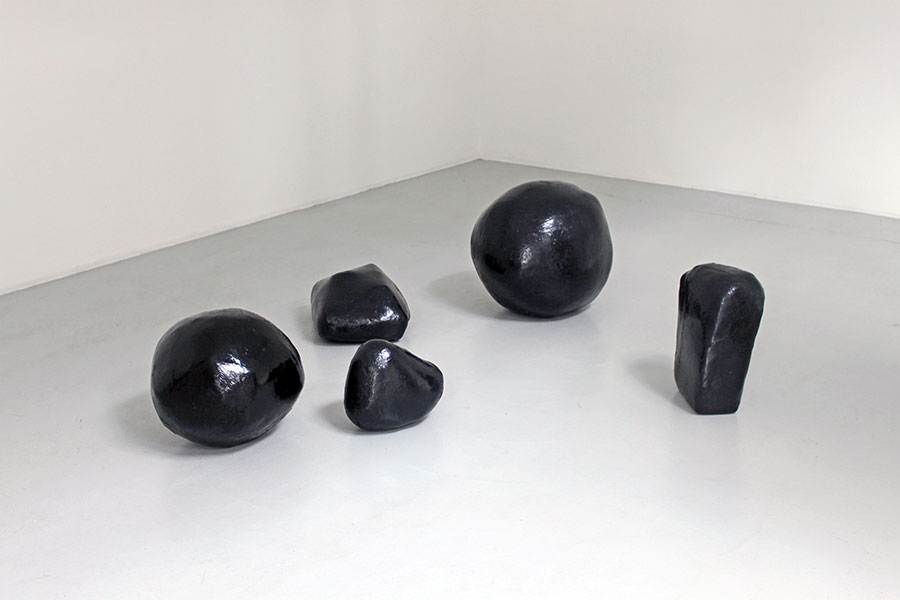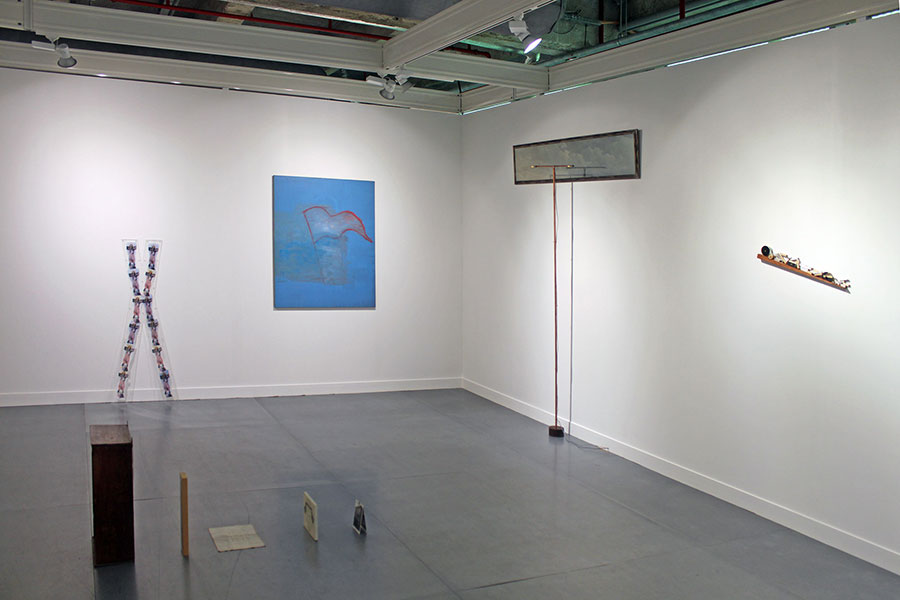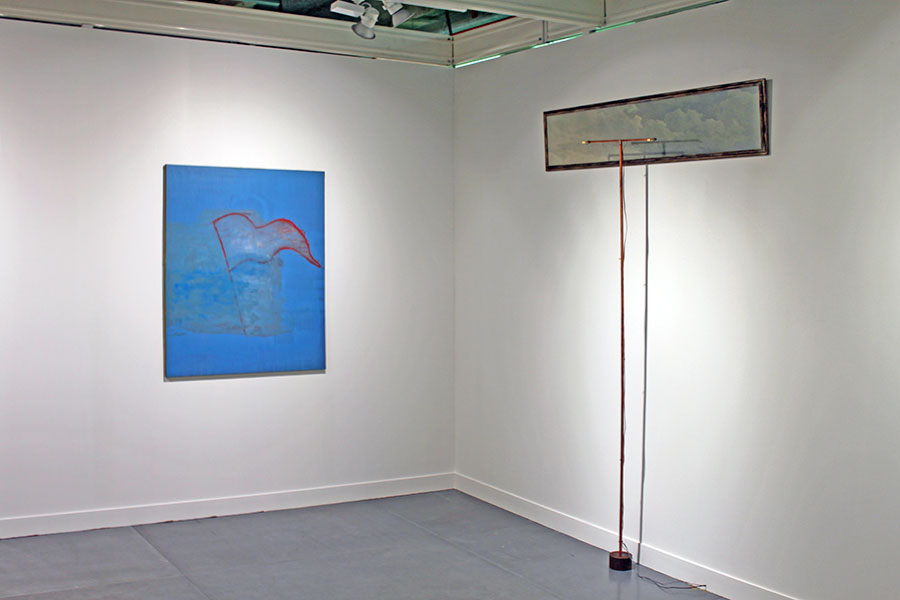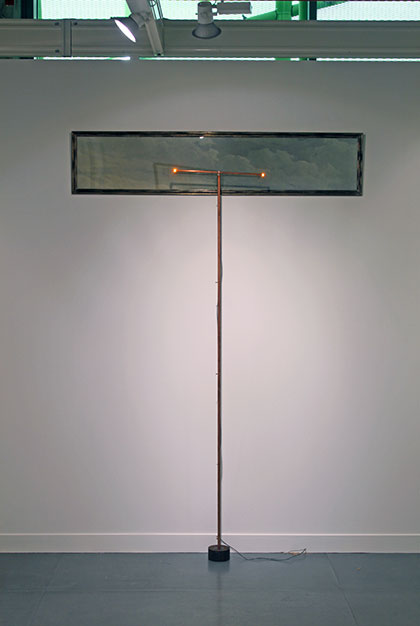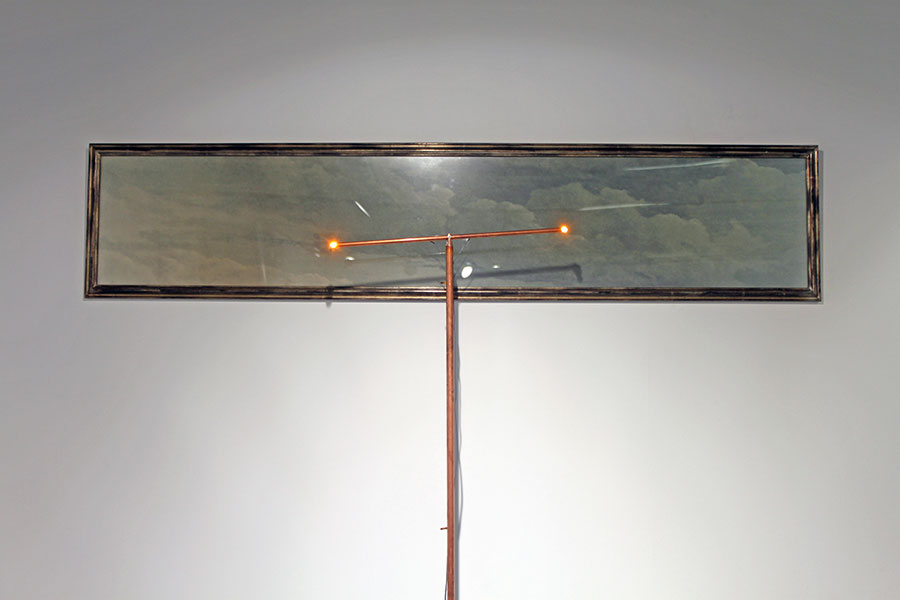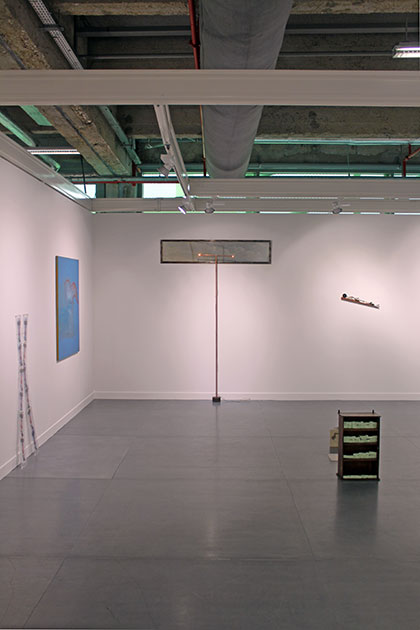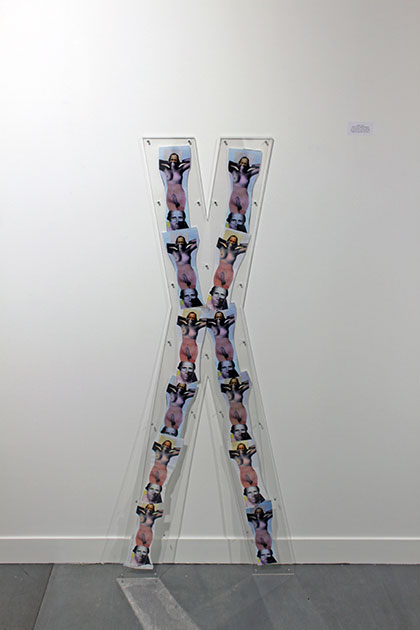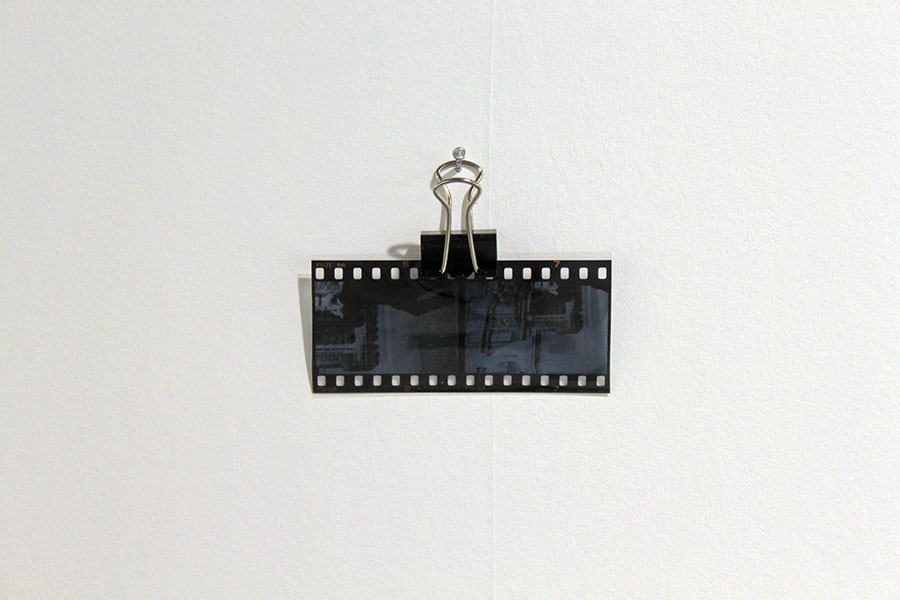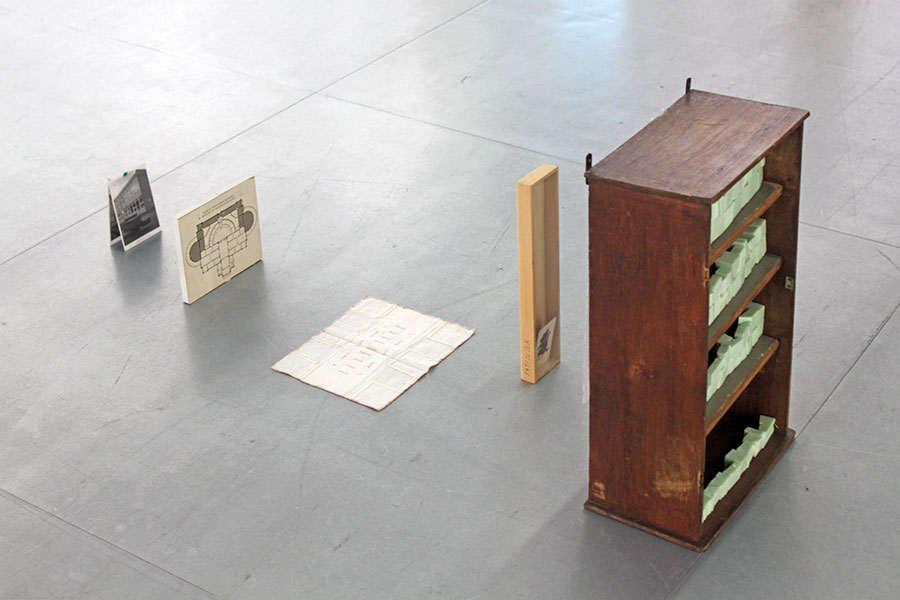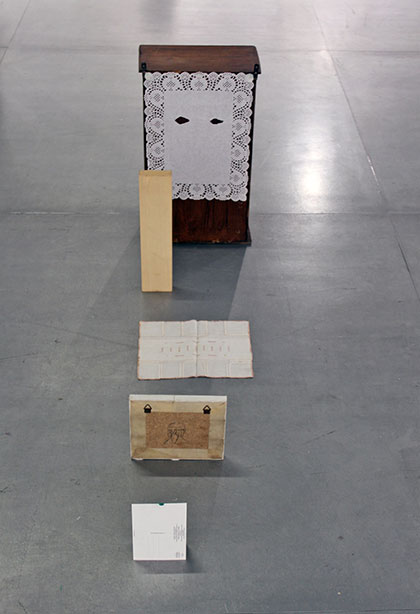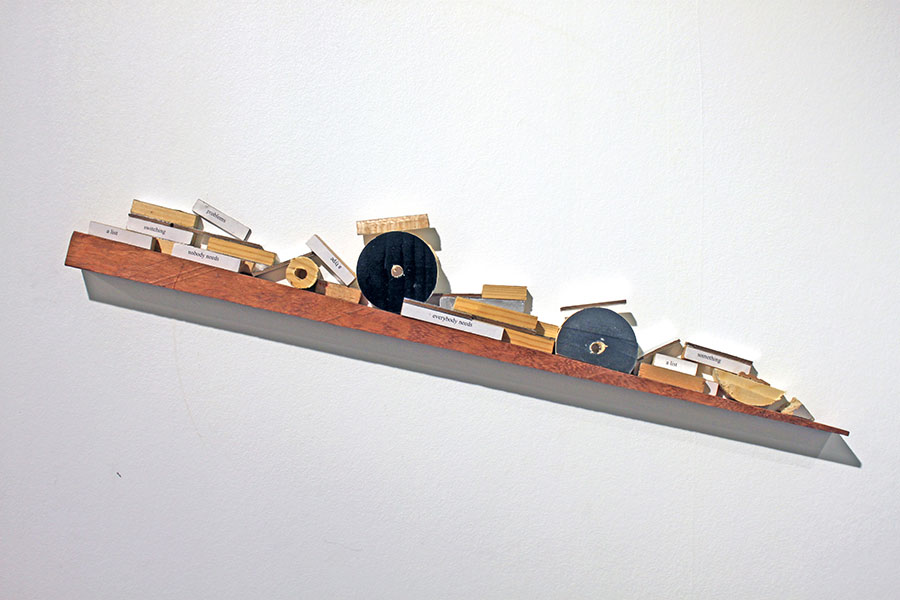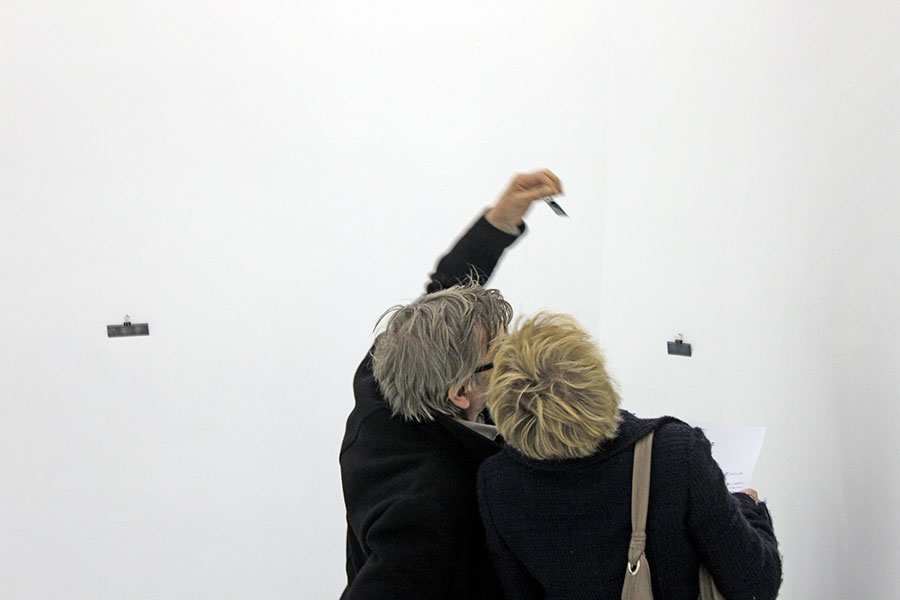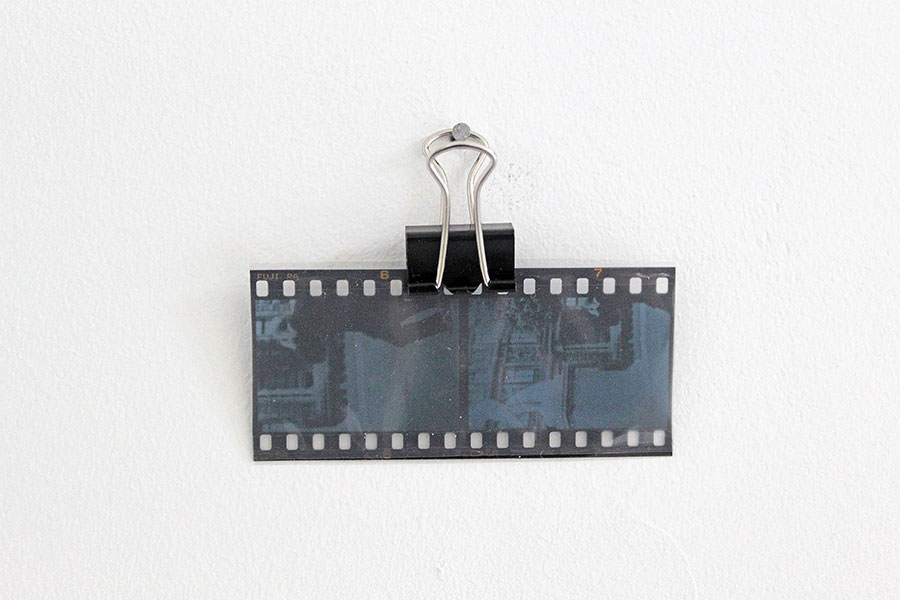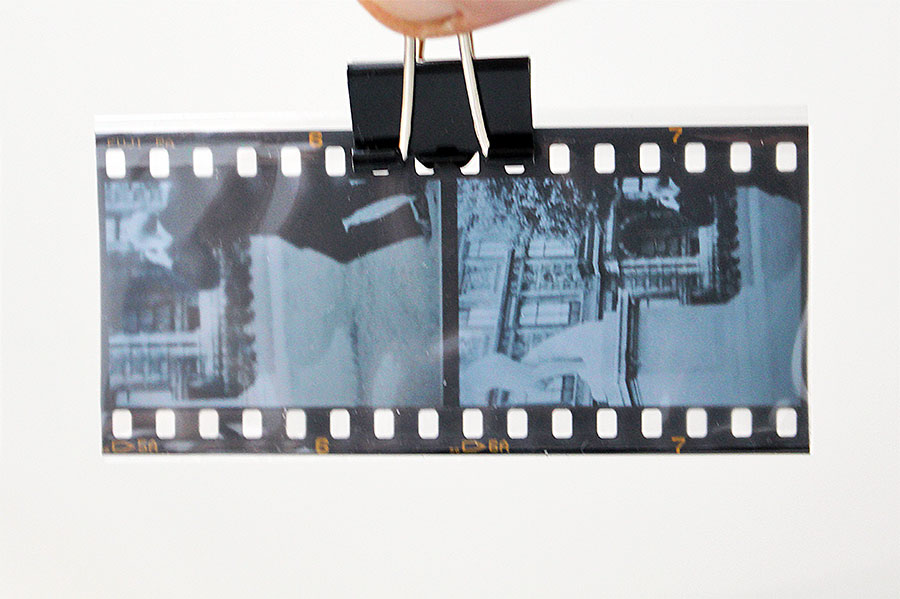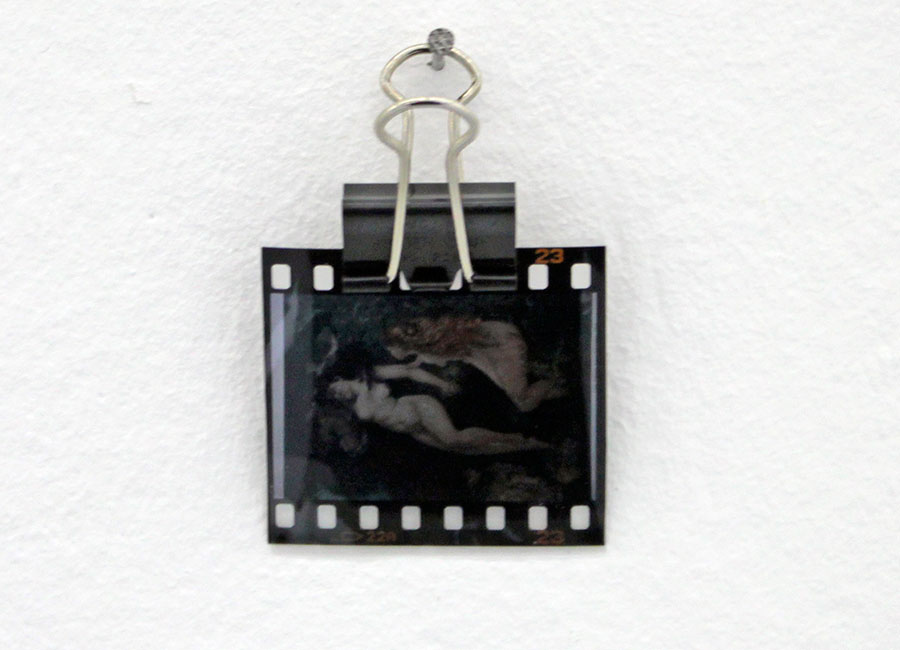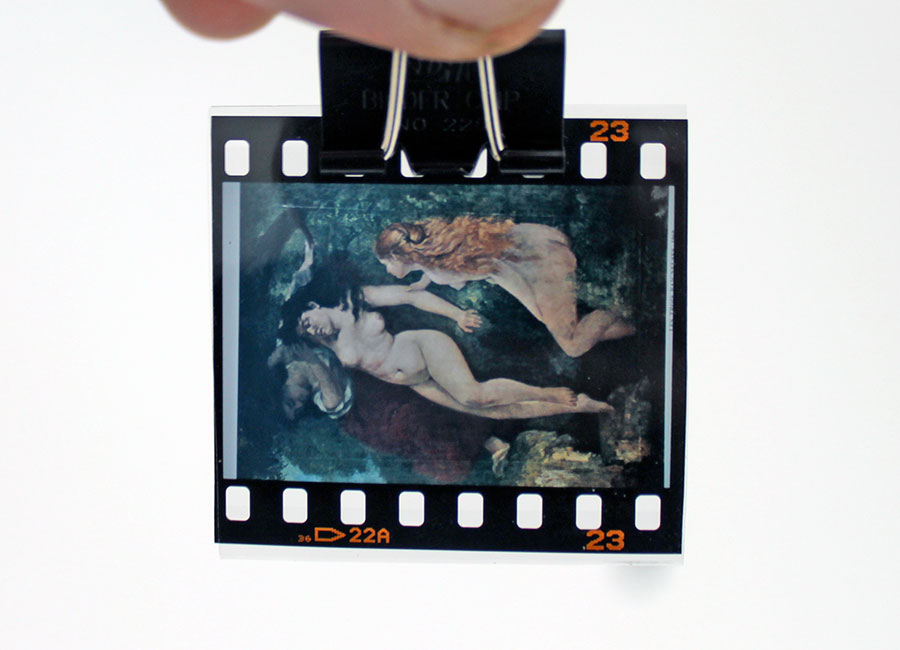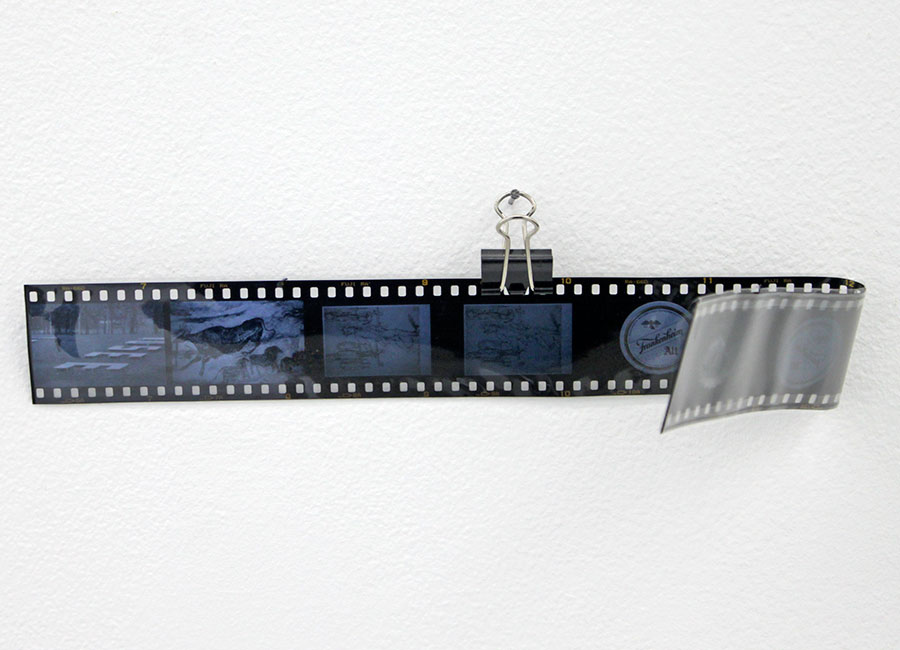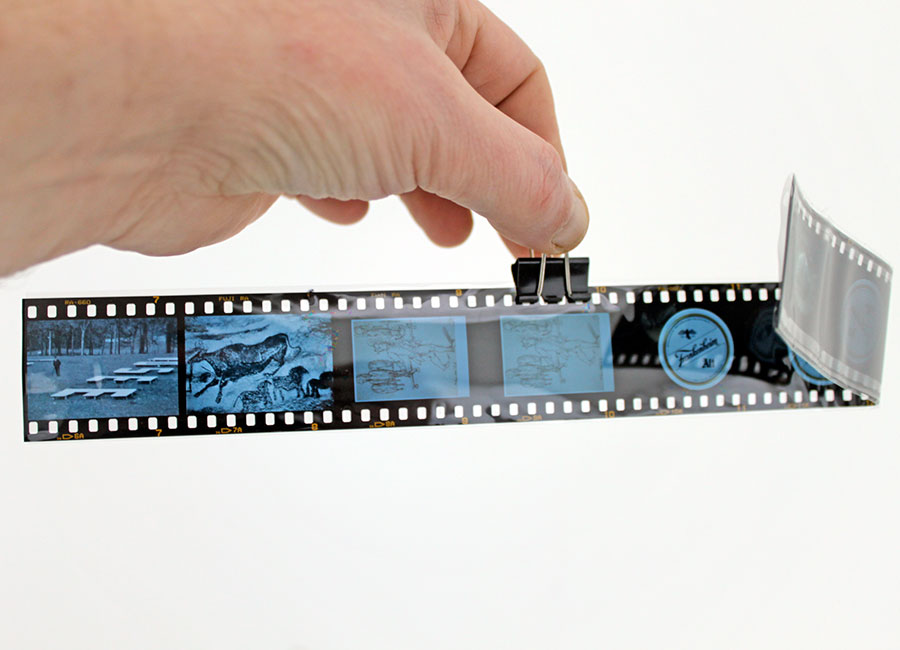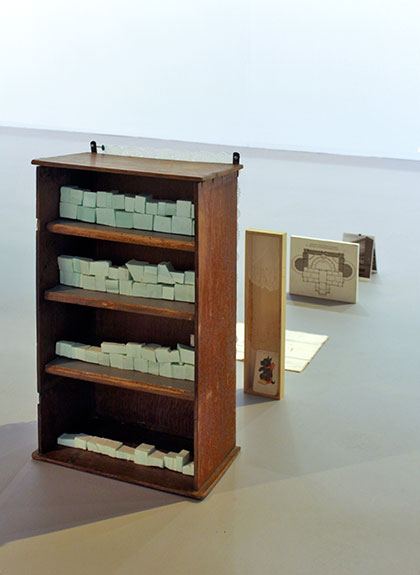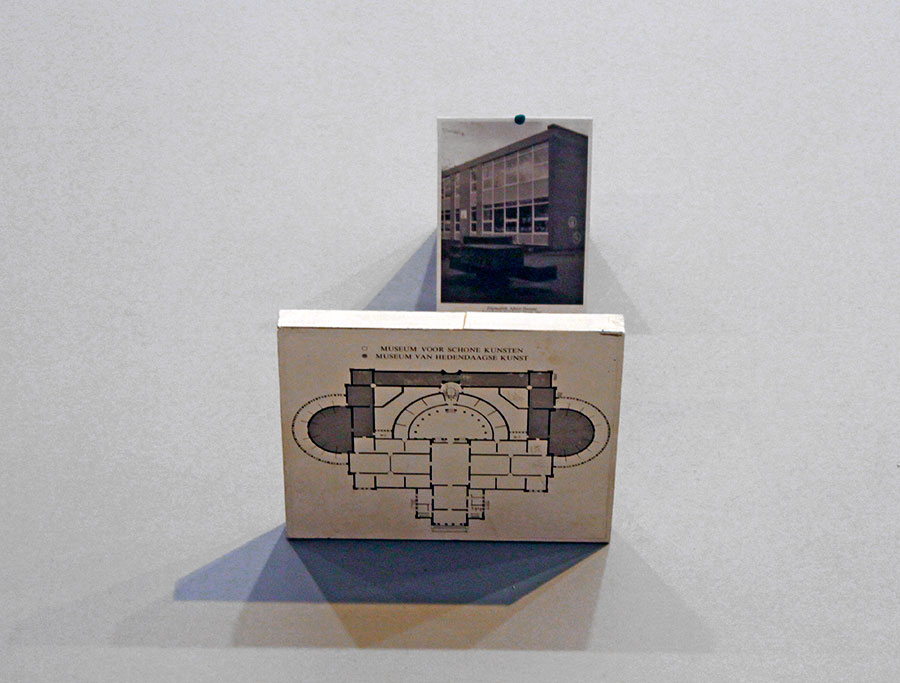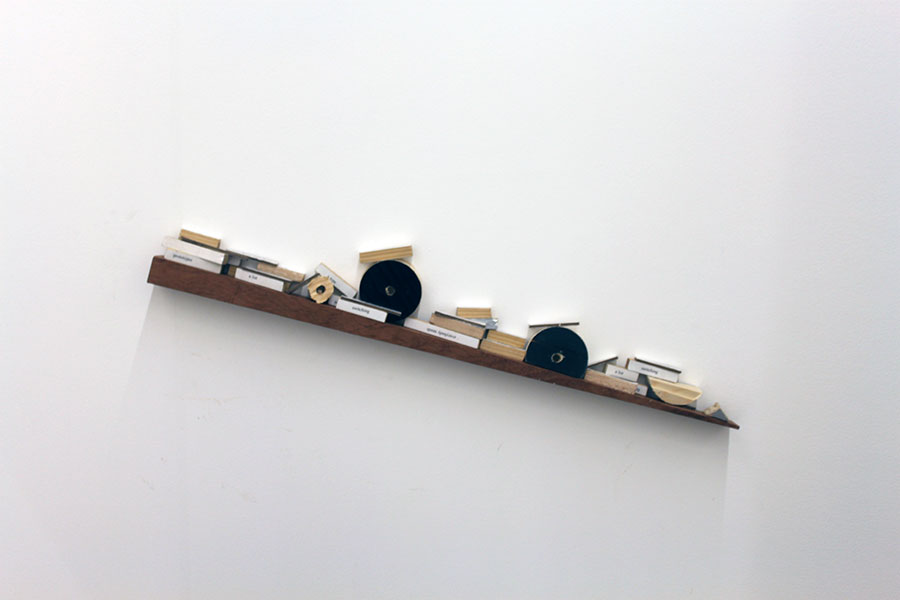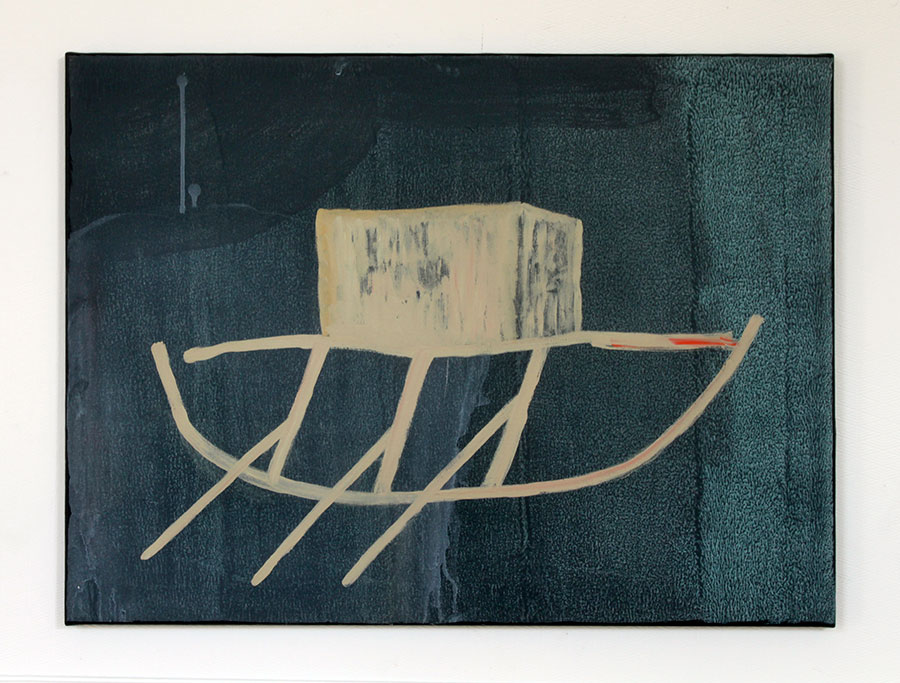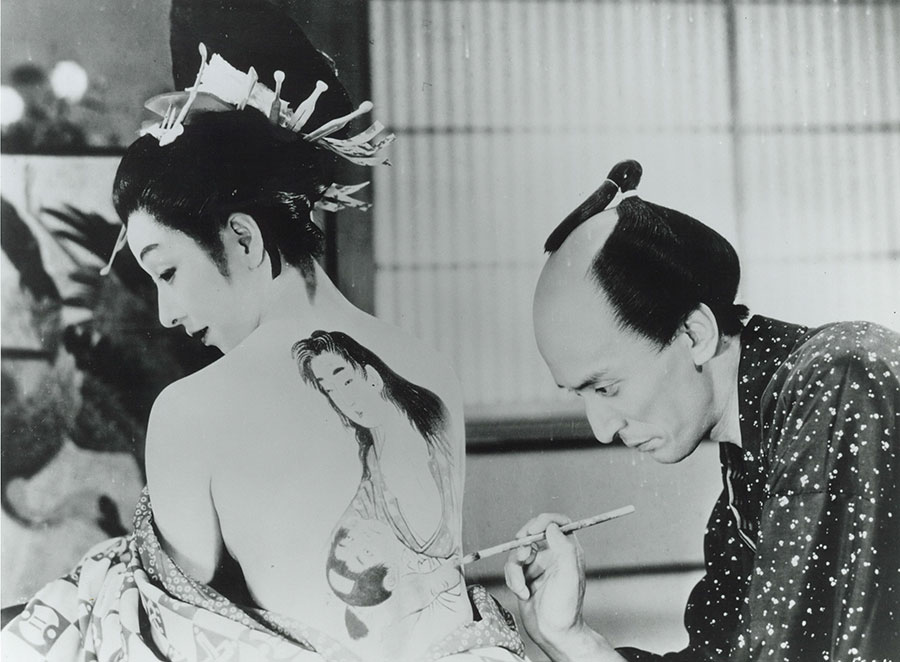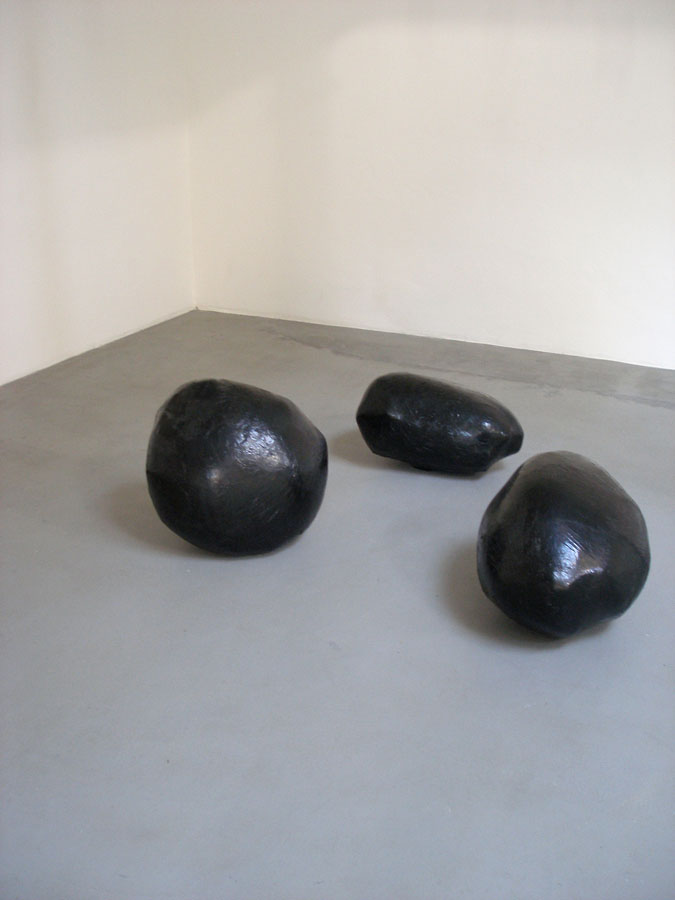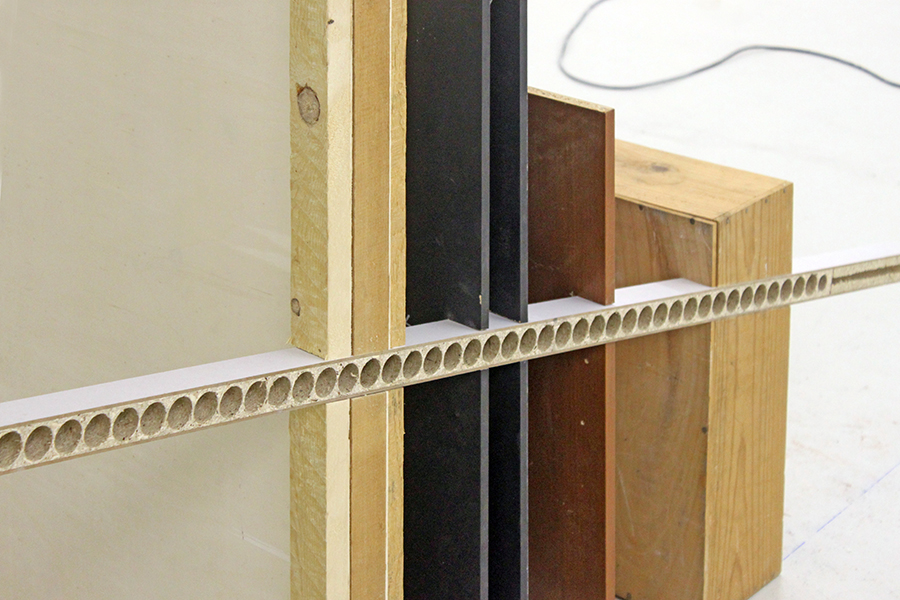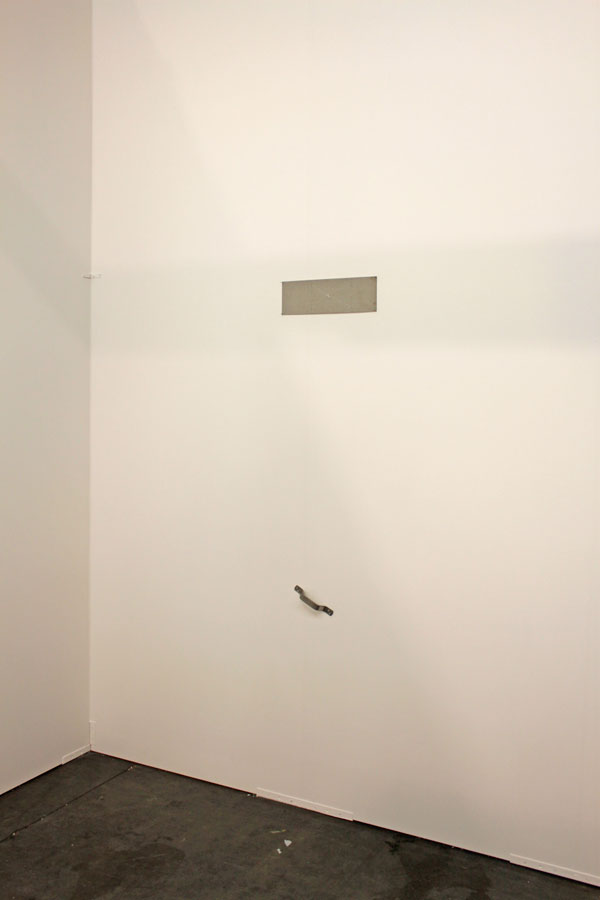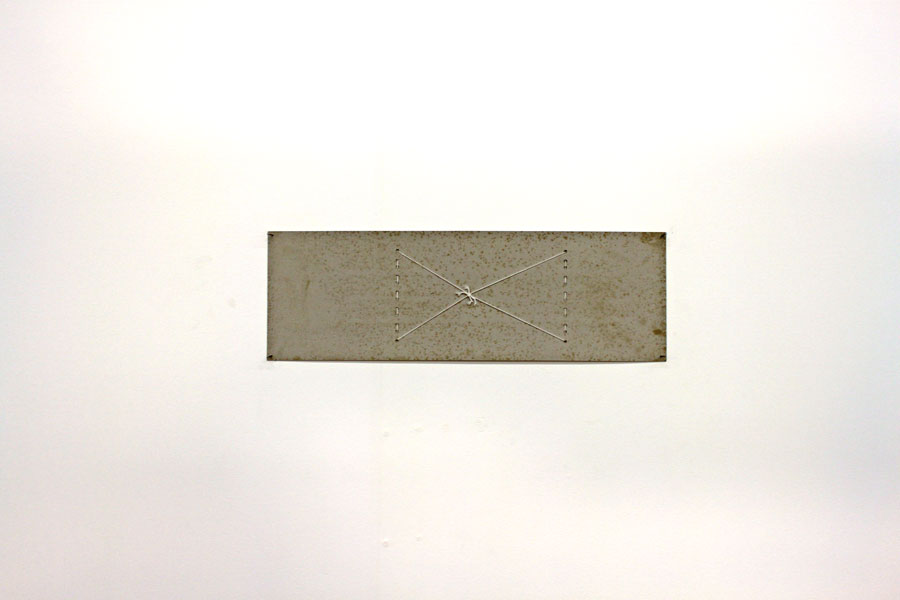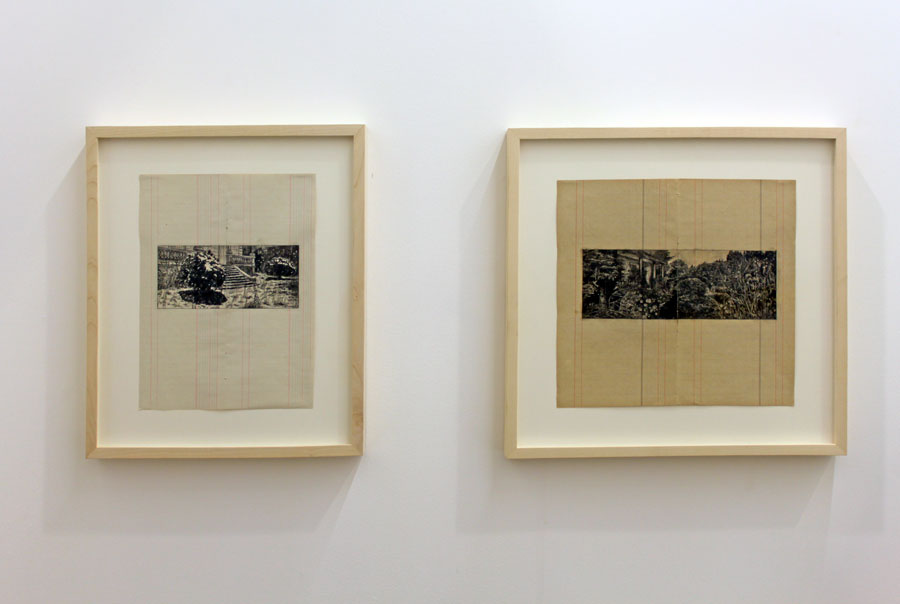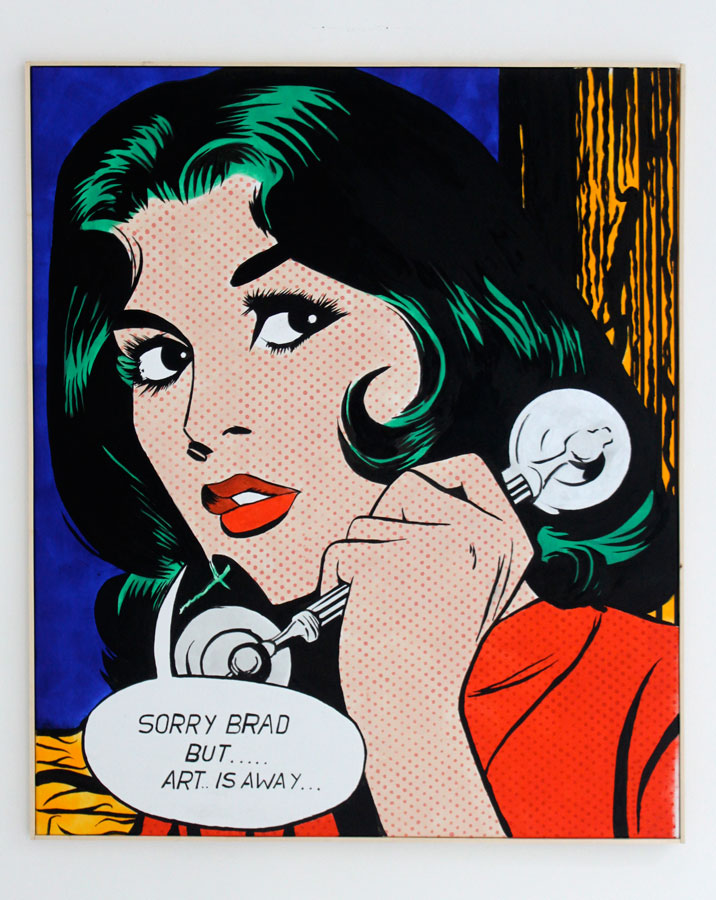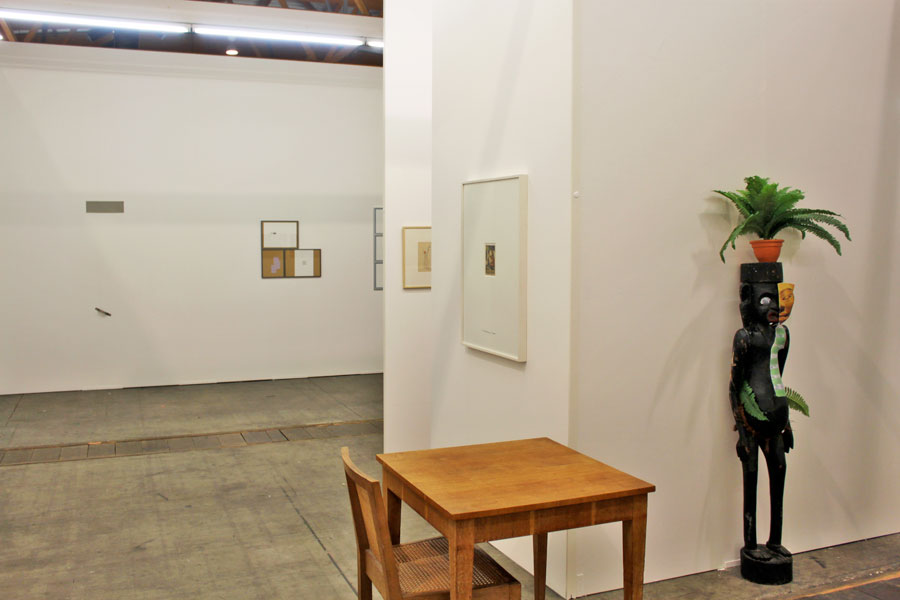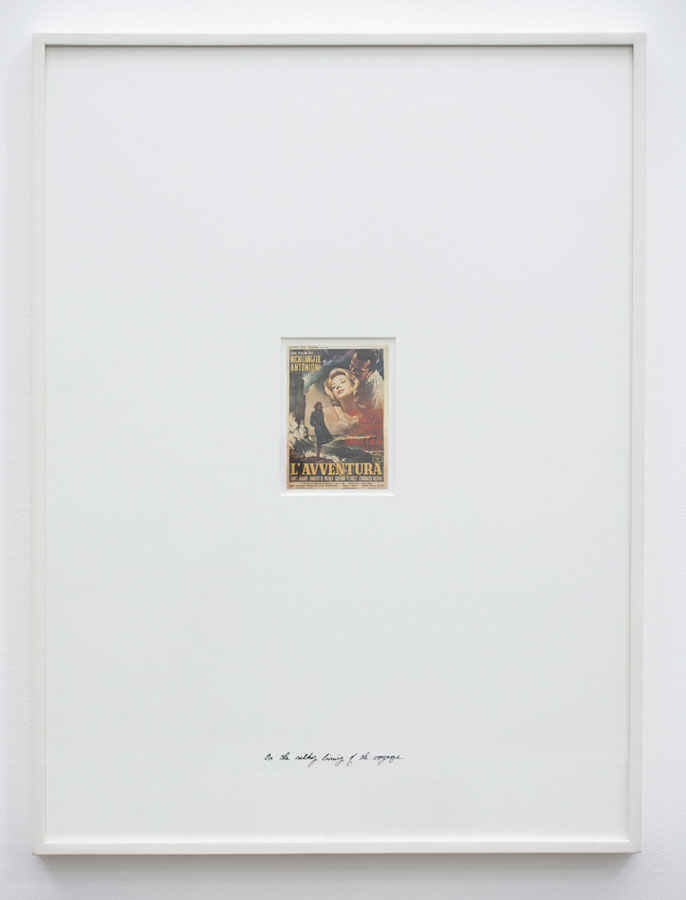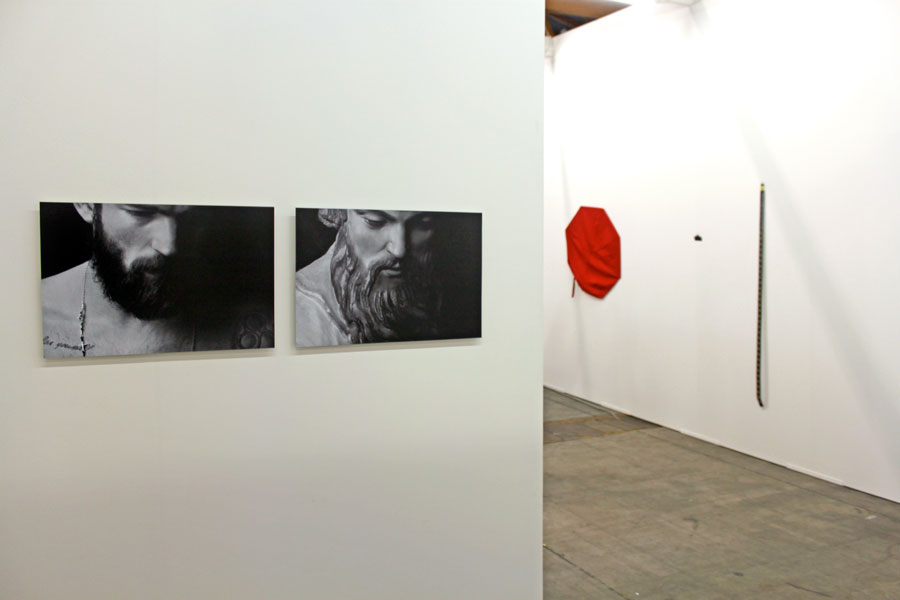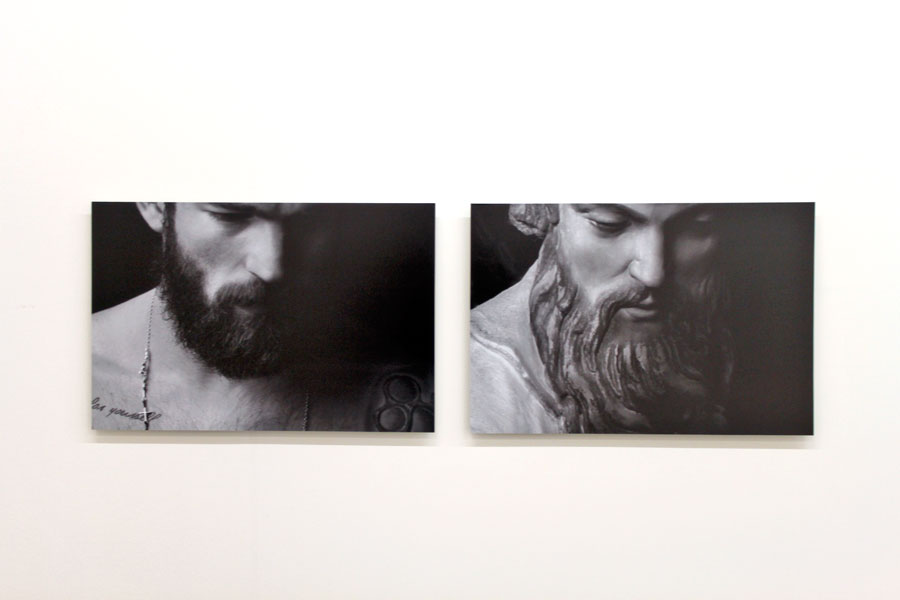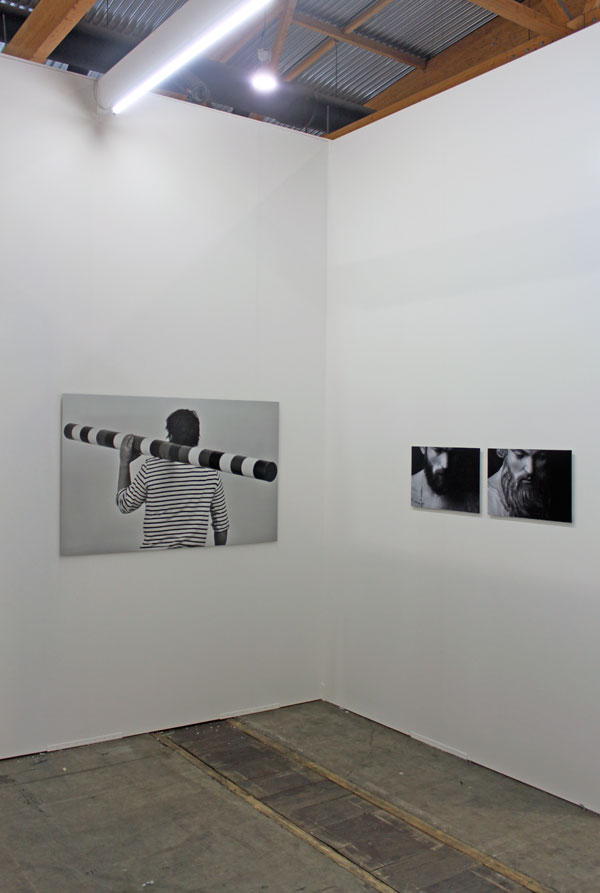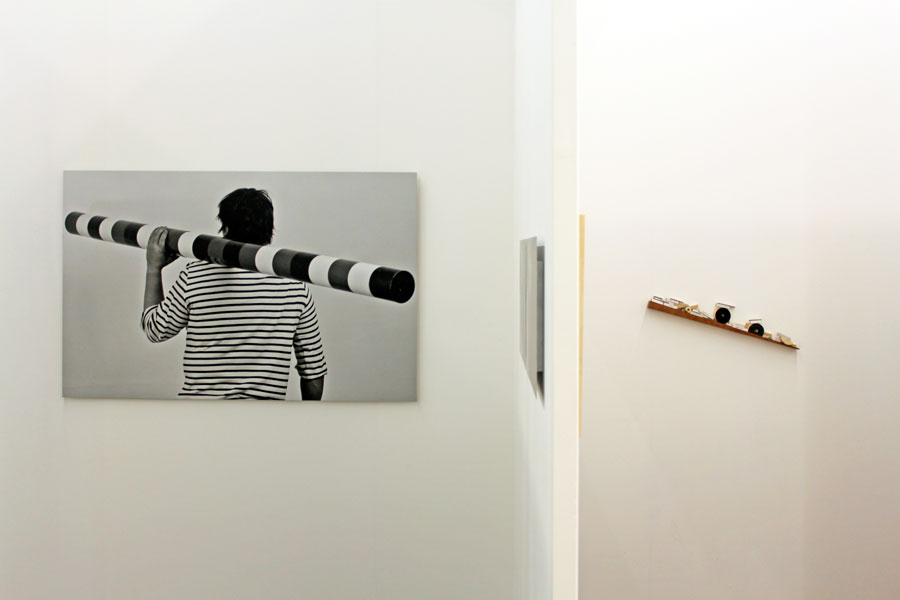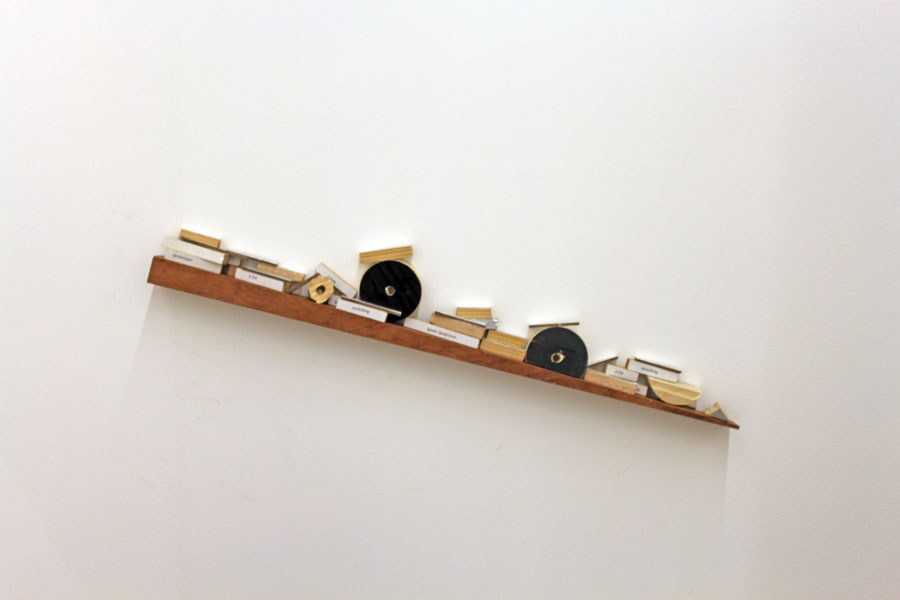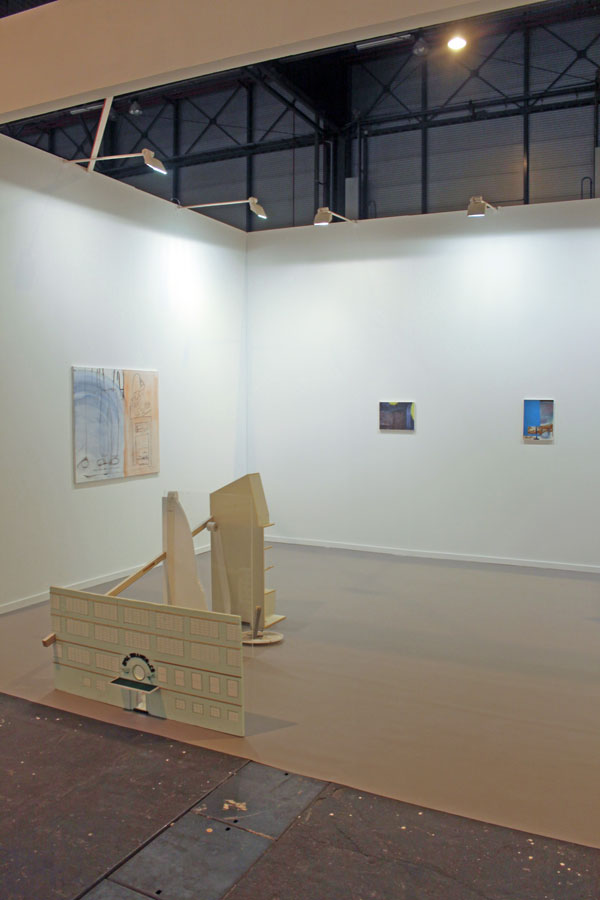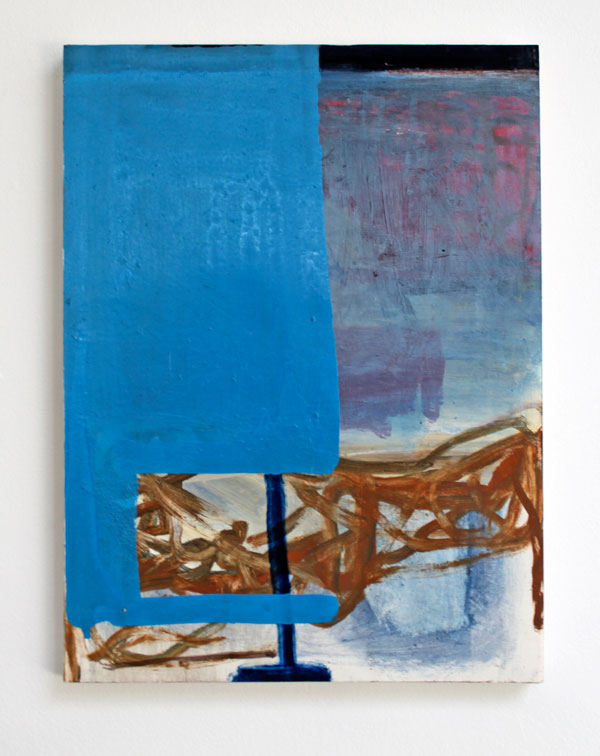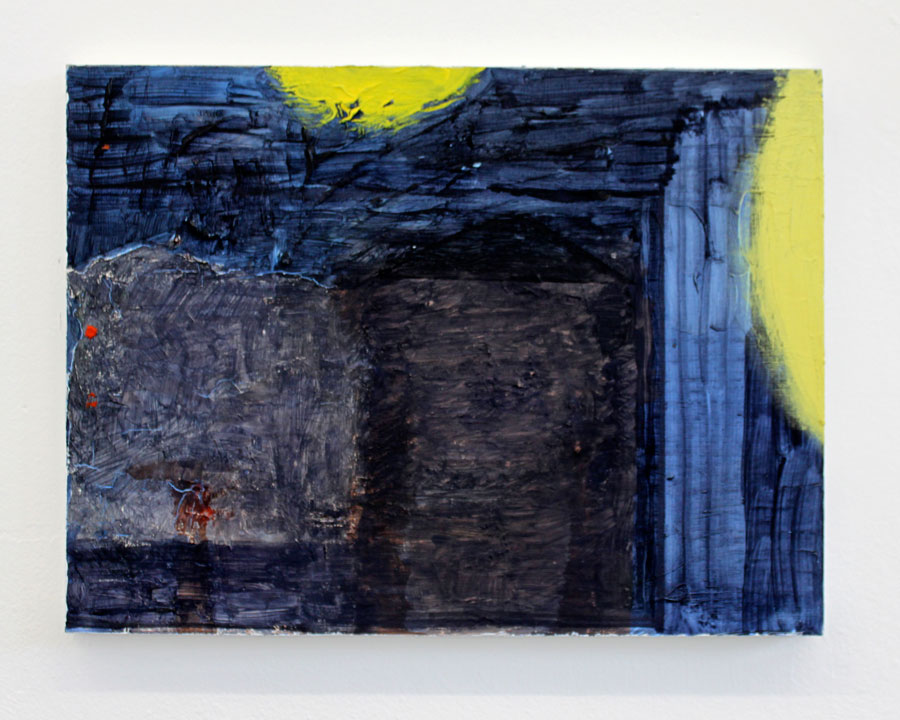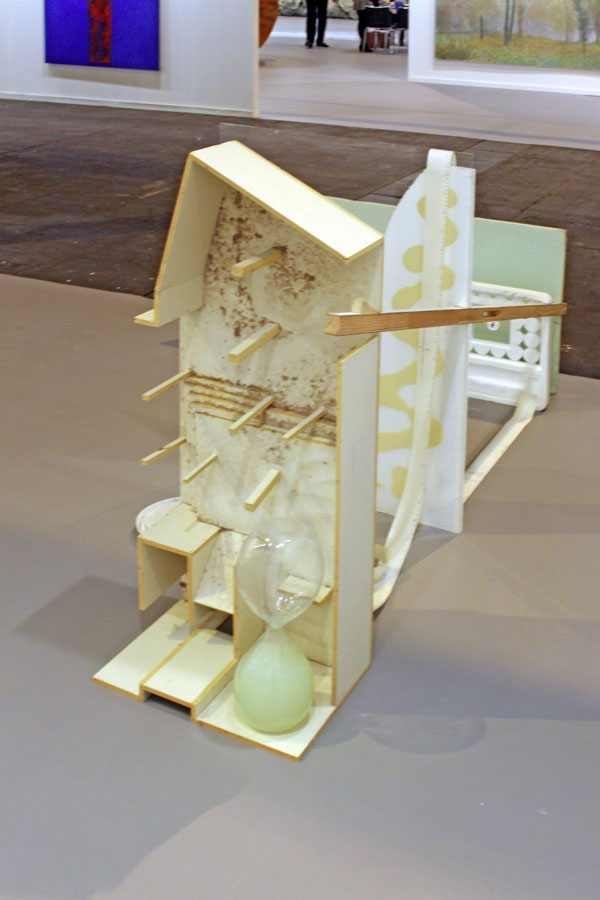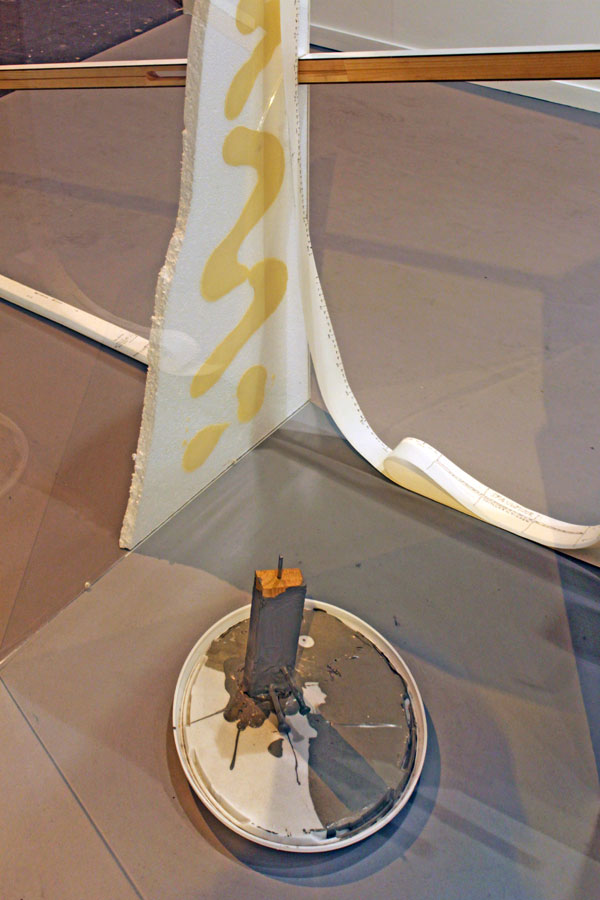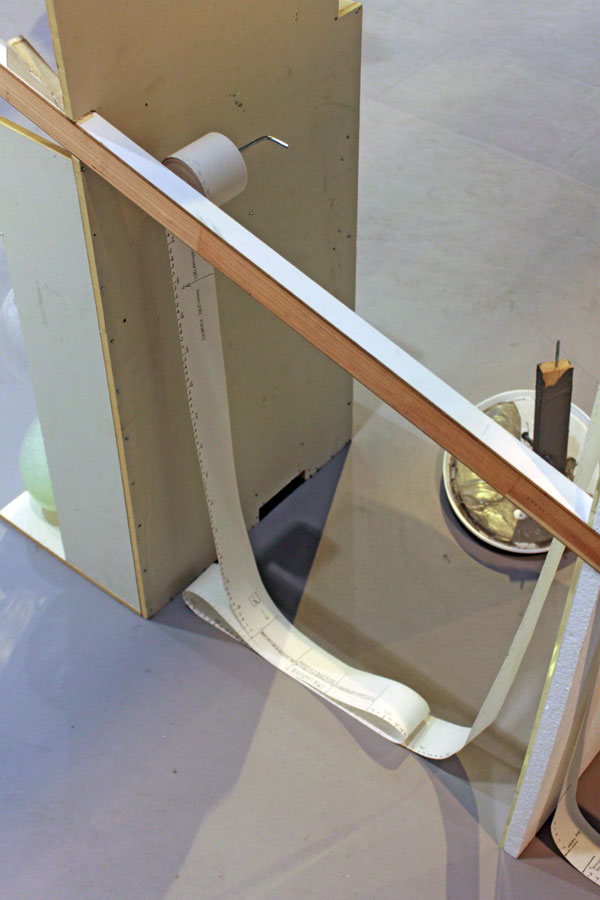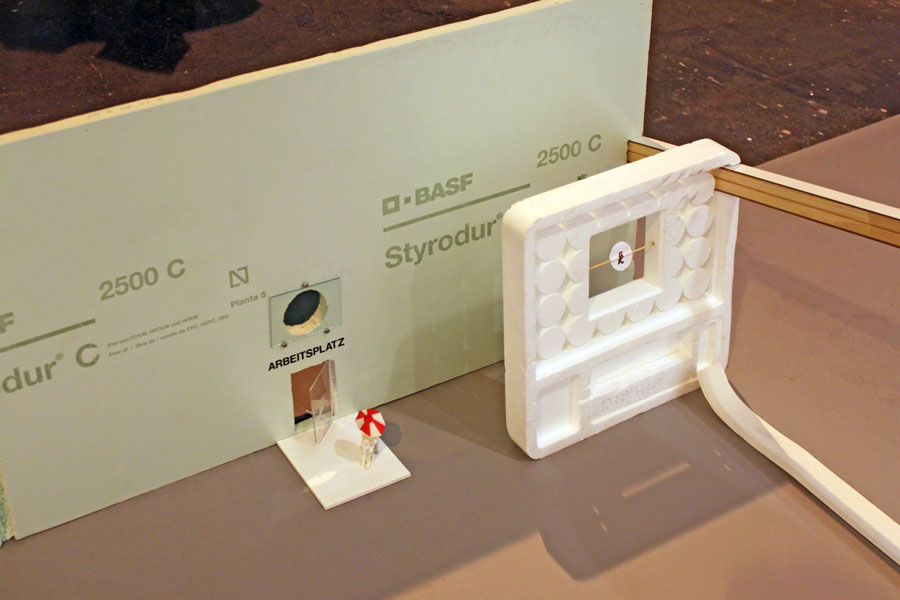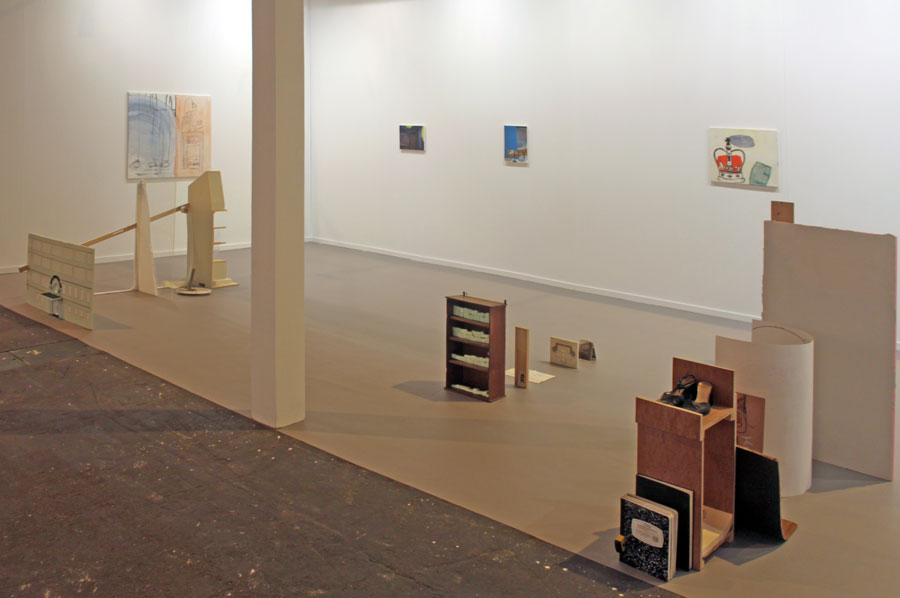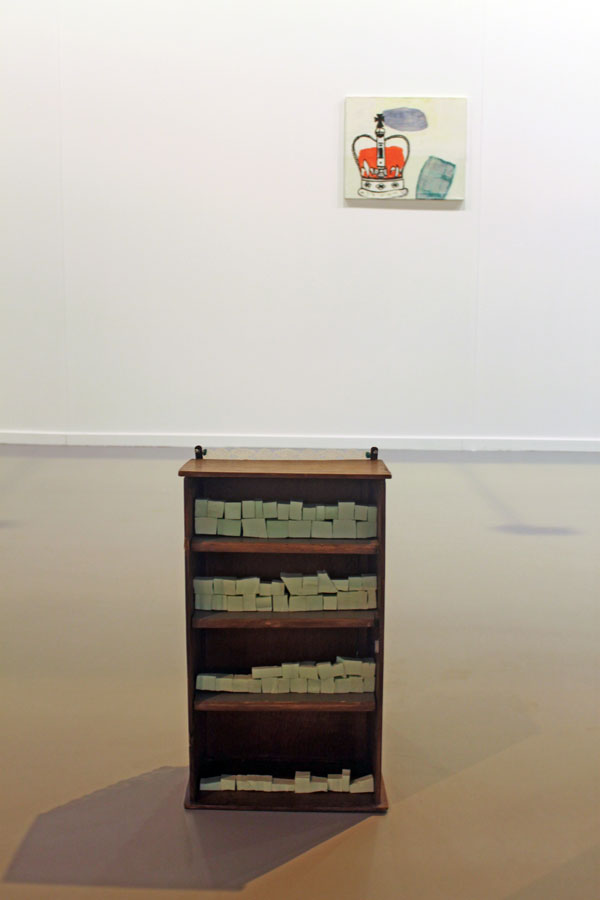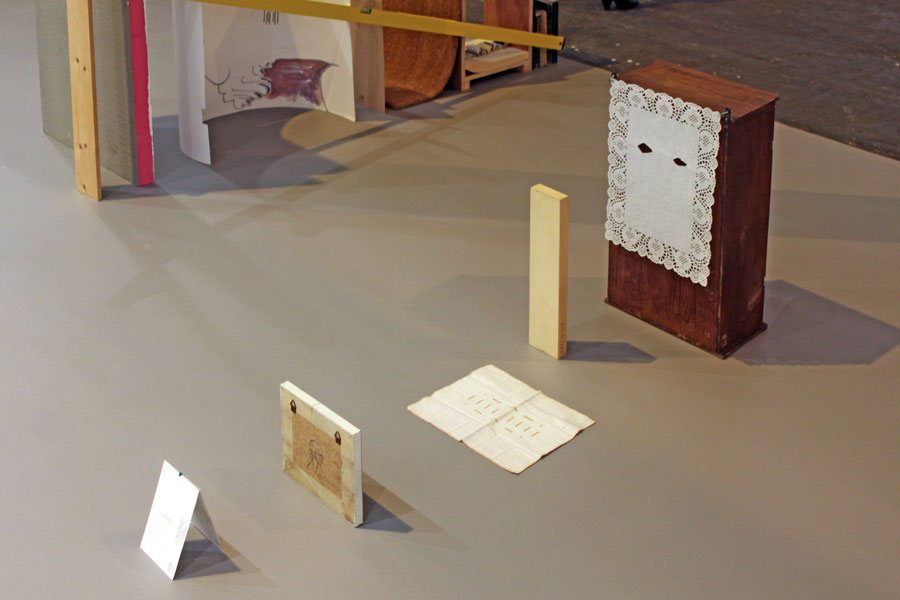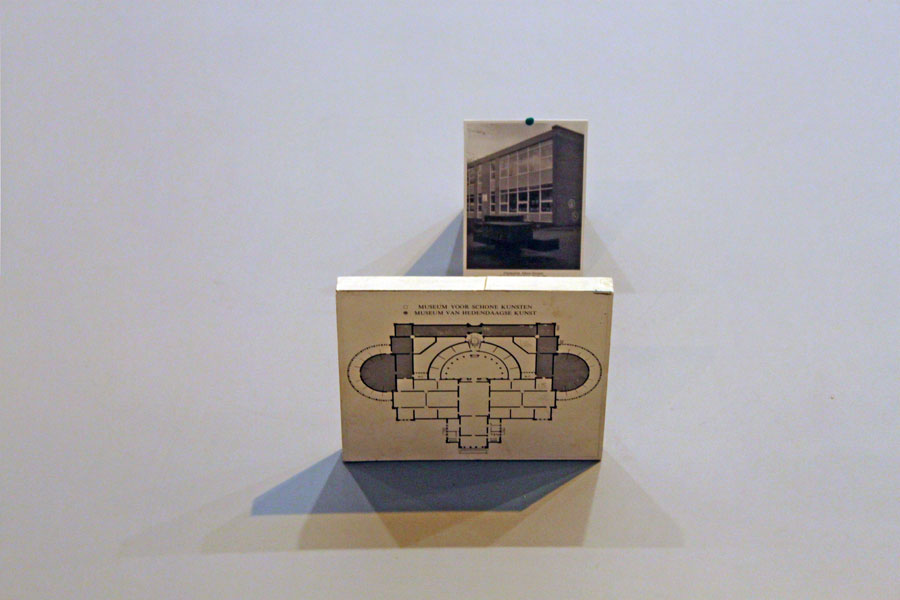Suchan Kinoshita
Isofollies IV, 2014
Technique mixte, dimensions variables
« la taille », « à faire ce jour, limited édition », « le penseur en vacances », « couples », « www ».
« … Grand –père était avant tout coiffeur. Cet art était sa vie. Il lui a tout sacrifié. Il était aussi un collectionneur passionné : documents touchant à sa profession, timbres, gravures médailles, cartes de membre d’associations de tir, monnaie auxiliaire. D’abord deux puis trois pièces de son appartement du 8 de la Ryfligasse furent consacrées à ses collections. Après sa mort en 1971, en mettant de l’ordre, j’ai mis de côté et conservé tout ce qui me rappelait mes grands parents. Depuis des années, je trouvais que cet appartement avait une valeur d’exposition, en tant que visualisation d’une histoire, témoignage d’un mode de vie, illustration du fait que, dans la vie de chaque être humain, existe un moment où chaque objet devient naturel, coule de source et que, à ce moment là, l’accumulation des signes et des objets n’obstrue plus le chemin. (…) Lors de la visite des lieux commémoratifs, j’ai toujours été fasciné par le problème posé par les maisons du souvenir ou, en montrant une exposition, comment redonner vie, même artificiellement, grâce aux objets. Une reconstitution de l’appartement n’aurait pas suffi. L’ordre de Grand-Père ne peut-être présenté que classé, classifié. »
Harald Szemann a classé tous ces objets ayant appartenu à son grand-père. Il en a fait une exposition, à Berne, à la galerie Toni Gerber, qu’il a titrée : « Grand-père, un aventurier comme vous et moi » (1974).
Je repense à ce geste alors que Suchan Kinoshita œuvre à sa quatrième constellation d’ « Isofollies ». Ces astéroïdes sont apparus en 2004 dans l’œuvre de Suchan Kinoshita, une sorte de jardin de sculptures, comme des notes de musique tombées d’une portée, des aérolithes jalonnant un espace de déambulation. Volumes noirs ronds, ventrus, aux formes parfois plus étranges, ils opèrent dans l’espace d’exposition, sans qu’on sache ce qui les constitue. En fait, ils agissent comme une sorte de pétrification, comme de grosses scories de temps. Sur le lieu même de l’exposition, dans les caves et greniers de la maison, l’artiste a récolté et entassé des objets de rebut, des déchets de toutes sortes, ce qui a été abandonné, n’a plus d’utilité. Suchan Kinoshita en constitue des ballots de diverses tailles ; elle les momifie au sens propre comme au figuré, les serre dans de longues bandes de plastique industriel, élastique et noir, roulent ces ballots sur le sol comme s’il s’agissait de boules de neige, les compressant, compactant ces rebuts ainsi fossilisés. C’est le temps du lieu que voici pétrifié.
En 2006, lors d’une exposition à l’Ikon Gallery à Birmingham sont apparus trois nouveaux astéroïdes que l’artiste nomme désormais «Isofolies », du nom du plastique qu’elle utilise. Ce sont, cette fois, les résidus du montage de l’exposition que Suchan Kinoshita utilise. Le premier ensemble de ces sculptures devient ainsi un principe délocalisé. Kinoshita est invitée quelques mois plus tard par la biennale de Sharjah, aux Emirats Arabes Unis. «Still Life, art, ecology and the political of change» aborde les défis sociaux, politiques et environnementaux, le développement urbain excessif et l’épuisement progressif des réserves naturelles. Tout naturellement, Suchan Kinoshita propose de produire une troisième ensemble d’ «Isofolies». L’ensemble, constitué d’une quinzaine d’œuvres, est à nouveau produit in situ, avec les déchets et rebuts trouvés sur place. Cet espace de pensée né dans un contexte quasi domestique, temps compressé d’un lieu, du vécu de ses habitants successifs, prend une dimension de recyclage, de délocalisation des déchets, comme de recyclage du principe même qui conduit la création de l’objet. A Birmingham c’était le temps d’un centre d’art contemporain, à Sharja, une dimension plus large, plus actuelle face aux défis du temps.
Cette quatrième constellation est singulière, elle appartient à la sphère privée. G.B., une amatrice d’art, a confié à l’artiste une série d’objets, d’écrits, de photographies, d’agendas, qui ont appartenu à une personne chère décédée, lui aussi un collectionneur passionné. C’est une accumulation de signes et d’objets dont elle n’a pas voulu se défaire, « des objets naturels, qui coulent de source » pour reprendre les termes d’Harald Szemann. G.B. a proposé à Suchan Kinoshita d’enfouir ces traces mémorielles dans une nouvelle constellation d’ « Isofollies ». Sans avoir connu la personne à qui tous ces objets ont appartenu, Suchan Kinoshita les a classé, a imaginé des scenarii, avant d’envisager cinq sculptures distinctes, cinq astéroïdes, participant d’une même constellation. Afin d’accentuer le caractère singulier de chacun de ces aérolithes, elle leur a donné des titres distincts, « la taille », « à faire ce jour, limited édition », « le penseur en vacances », « couples », « www ». Soustraits au regard, ces traces mémorielles acquièrent ainsi une nouvelle vivacité, abstraite et universelle.
[sociallinkz]
